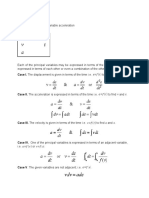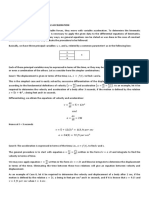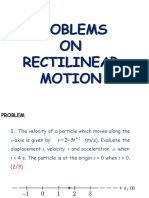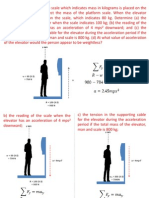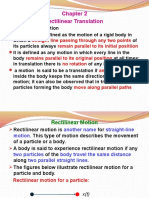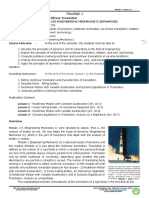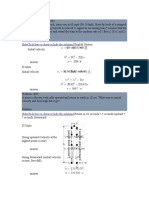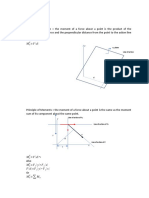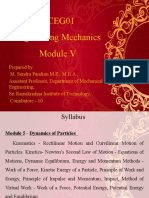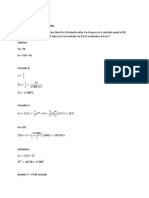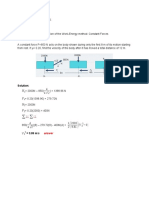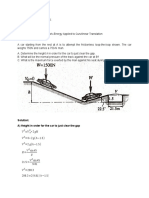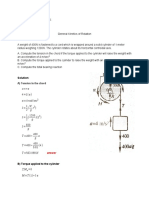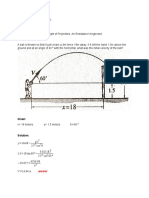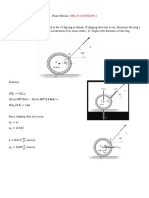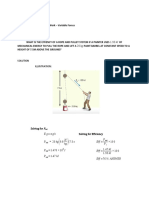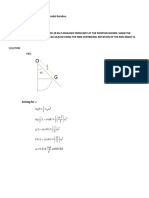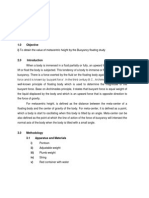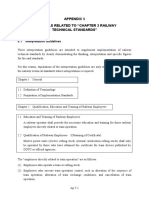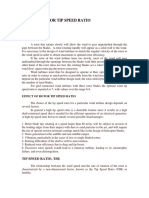0% found this document useful (0 votes)
2K views12 pagesChapter 2 Compilation
The document provides solutions to problems involving rectilinear motion with constant and variable acceleration. It includes the following problems:
1) Two cars traveling at 25 m/s, with one 73.5m behind the other. The lead car decelerates at 3 m/s^2. It is solved to find the time for the trailing car to overtake, and the distances each car travels.
2) A stone thrown vertically upward and returning to earth in 5 seconds. It is solved to find the maximum height reached.
3) Given an equation relating displacement, velocity, and acceleration over time, values are solved for at specific times.
4) Motion curves are plotted for acceleration, velocity,
Uploaded by
River RunCopyright
© © All Rights Reserved
We take content rights seriously. If you suspect this is your content, claim it here.
Available Formats
Download as PDF, TXT or read online on Scribd
0% found this document useful (0 votes)
2K views12 pagesChapter 2 Compilation
The document provides solutions to problems involving rectilinear motion with constant and variable acceleration. It includes the following problems:
1) Two cars traveling at 25 m/s, with one 73.5m behind the other. The lead car decelerates at 3 m/s^2. It is solved to find the time for the trailing car to overtake, and the distances each car travels.
2) A stone thrown vertically upward and returning to earth in 5 seconds. It is solved to find the maximum height reached.
3) Given an equation relating displacement, velocity, and acceleration over time, values are solved for at specific times.
4) Motion curves are plotted for acceleration, velocity,
Uploaded by
River RunCopyright
© © All Rights Reserved
We take content rights seriously. If you suspect this is your content, claim it here.
Available Formats
Download as PDF, TXT or read online on Scribd
/ 12


